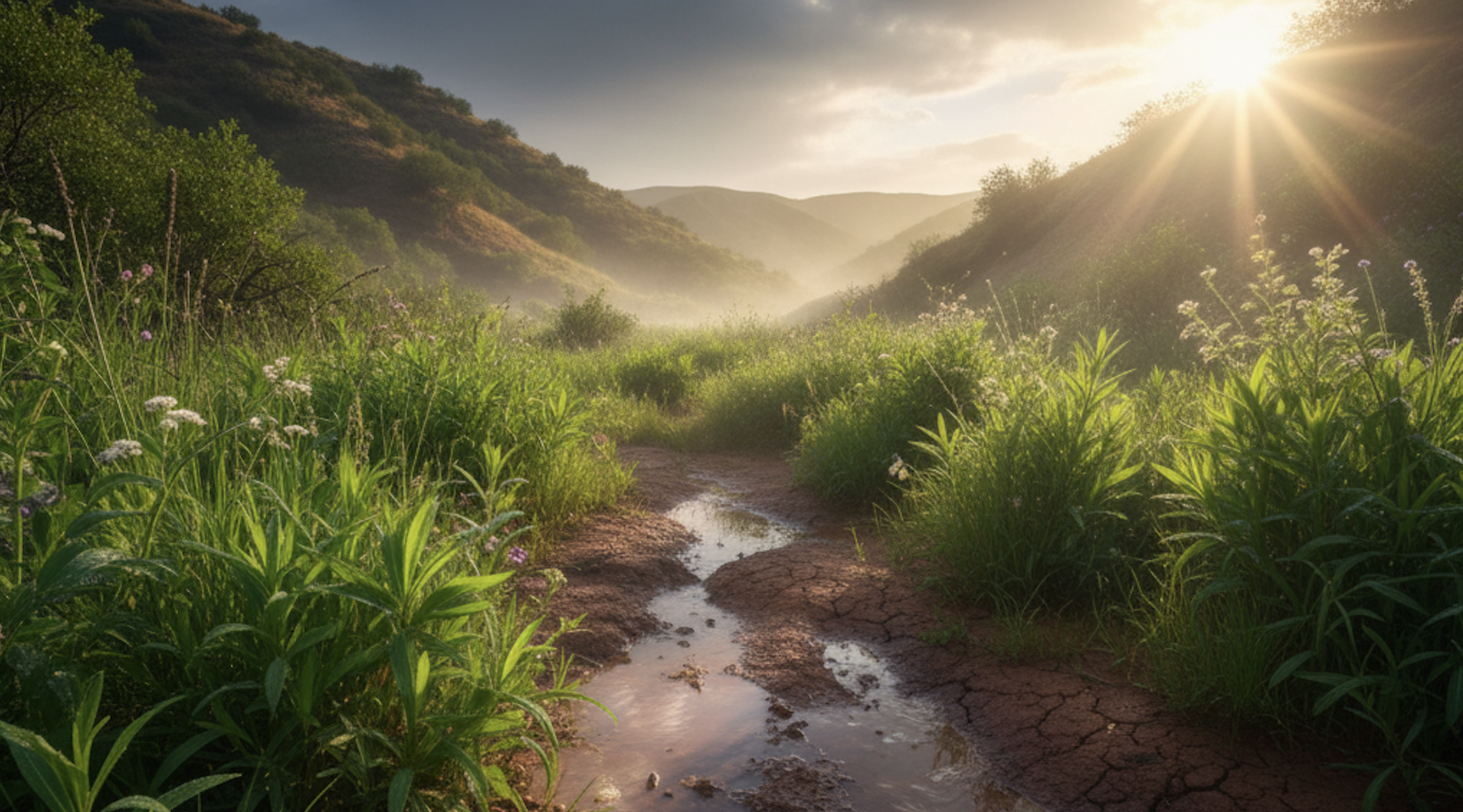In the last article, we established the new, volatile reality of "hydroclimate whiplash"—the violent swings between extreme wet and dry. But how does this chaos directly lead to more dangerous fires?
The answer lies in a dangerous, two-step cycle known as the "twofold" fire risk mechanism. This cycle transforms the landscape into a more volatile and hazardous fuel bed than at any point in modern history.
Phase 1 (Wet): The Great Fuel-Loading
The "deluge" phase of the whiplash, driven by atmospheric rivers, provides a massive infusion of moisture into the ecosystem. This heavy precipitation saturates soil, which in turn "greatly" spurs and increases the growth of flammable vegetation.
The fuels most affected are the fine, or "flashy," fuels—chiefly grasses and shrubs.
This presents a critical paradox, one that is central to understanding our new climate reality:
Atmospheric rivers, while lauded for their "drought-busting" capabilities, are now a direct predictor of increased wildfire risk. These events "temporarily inhibit fires" but simultaneously "spur vegetation growth," which then "provides more fuel to feed fires... resulting in a larger wildfire season" in the year following the event.
The very storms that provide relief are, in fact, the primary fuel-loading mechanism for the next fire season.
Phase 2 (Dry): The Rapid Desiccation
The subsequent "drought" or dry phase aggressively reverses the effects of the wet period. This phase is characterized by record-hot summers and a delayed onset of the next rainy season (as established in Article 1).
This intense, dry heat rapidly "dries out" the new, abundant fuel load to "exceptionally high levels". The result is "acre after acre of desiccated brush" and "tinder-dry vegetation" stretching across the landscape.
The New Hazard: A Fuel-Abundant Landscape
This whiplash-driven fuel bed is particularly hazardous. It is not "fuel-limited" like the landscape of a prolonged drought (where lack of water can limit grass growth). Instead, this cycle creates a fuel-abundant landscape.
This new abundance of fine, flashy fuels is a wildfire's dream. These grasses and shrubs have a high surface-area-to-volume ratio, which allows them to ignite more easily and spread fire far more rapidly than heavier fuels.
They serve as the quintessential "ladder fuels," allowing a ground fire to climb into shrubs and then into the tree canopy, leading to the extreme, high-severity wildfires that can spread for miles.
Case Study: A Predictable Disaster
This is not a theoretical problem. The 2024 Park Fire, which became one of the largest in state history, was a direct example of this mechanism. It spread with terrifying speed, consuming the abundant vegetation that had grown during the record-wet 2024 spring, only to be "cured" into explosive fuel by the record-hot summer that followed.
This primed landscape, loaded with explosive fuel, is just waiting for an ignition source. And as the next article explains, that source is not a giant wall of flames, but something far more insidious.


